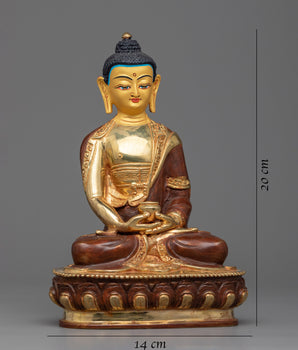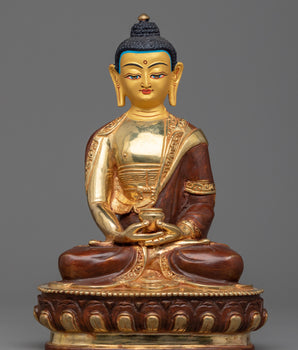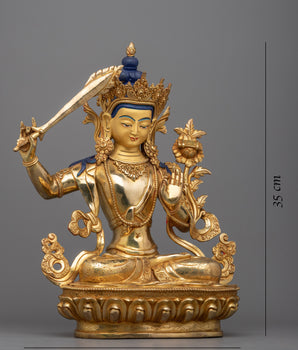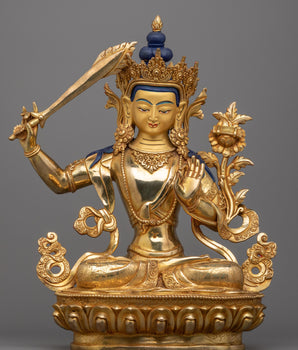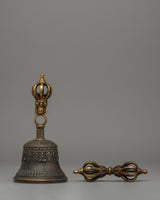
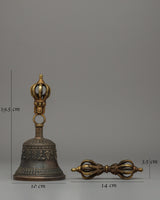
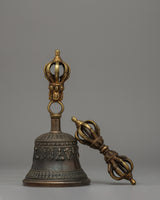
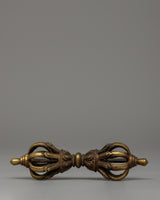
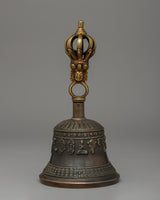
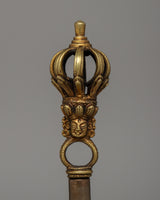
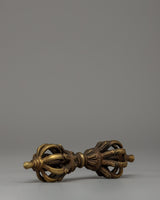
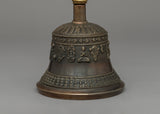
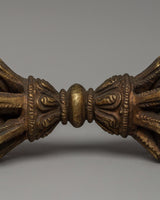
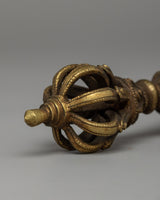
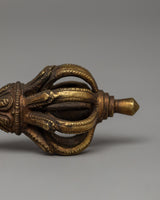
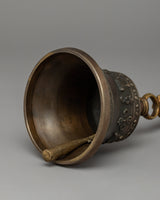
Vajra and Bell Set | A Sacred Pair for Rituals

100% AUTHENTIC

HANDMADE

FREE SHIPPING
Handcrafted Bronze Vajra and Bell Set for Spiritual Practice
------------------------------------------------------------
Bell
Size: 19.5cm (Height) x 10cm (Width)
Weight: 0.450 kg
Vajra
Size: 3.5cm (Height) x 14cm (Width)
Weight: 0.192 kg
Total Weight: 0.644 kg
Materials: Bronze
------------------------------------------------------------
About Vajra & Bell
The Vajra and Bell combination is a stunning example of utility and spirituality, meticulously crafted from bronze. The bell is 19.5 cm tall and 10 cm wide, with the matching vajra being 3.5 cm tall and 14 cm wide. The half vajra, representing knowledge and might in Buddhist traditions, is prominently depicted on the top of the bell. This symbolic vajra is embellished with a deity head carving, which gives the instrument a divine touch. The exquisite carvings on the bell's body, which include vajra, Buddha images, and other religious symbols, represent the set's profound spiritual significance.
The Vajra is also finely constructed, with intricate workmanship that matches the artistry found on the bell. The vajra signifies the indestructibility of truth, and its shape emphasizes the strength and serenity it represents in Buddhist rites. The bell and vajra complement each other perfectly, with the bell's deity head engraving heightening its holiness and linking it with the spiritual rituals for which both artifacts are commonly utilized. The bronze material and elaborate carvings enhance the set's visual and spiritual appeal, making it an ideal addition to any Buddhist ceremony or collection.
Introduction to Vajra & Bell
The vajra, which means "diamond" or "lightning" in Sanskrit, is an important symbol and ritual instrument in Hinduism and more in the Buddhist tradition Vajrayana ("diamond way") to which it gave its name.
Tibetan Dorje represents the indestructibility and efficiency that overcome all obstacles. Symbolically, Dorje Vajra destroys ignorance. In Tibetan Buddhist rituals, the vajra is often used with the bell, representing the masculine and the feminine, the ying and the yang, the effective action, and the compassion. The shape of the Tibetan Dorje is symmetrical, the two pyramidal heads representing samsara and Nirvana, which cancel each other out in its center thanks to the ring of Emptiness. Having a Dorje at home would have positive virtues against the various attacks we suffer.
The bell or drills is the feminine aspect of the perfection of wisdom, which directly realizes emptiness.
The Vajra or Dorje represents the male aspect as a method or skillful means, the indestructible nature of the absolute. Together they symbolize the blessing mandala of a practitioner’s main yidam deity.
How do you set up your own Buddhist Shrine?
-Find a clean, quiet, and uncluttered spot.
-Set up an altar table, and cover it with an altar cloth that calls to you.
-Place your sacred item (statue, thangka, or a picture of Buddha) at the center.

















